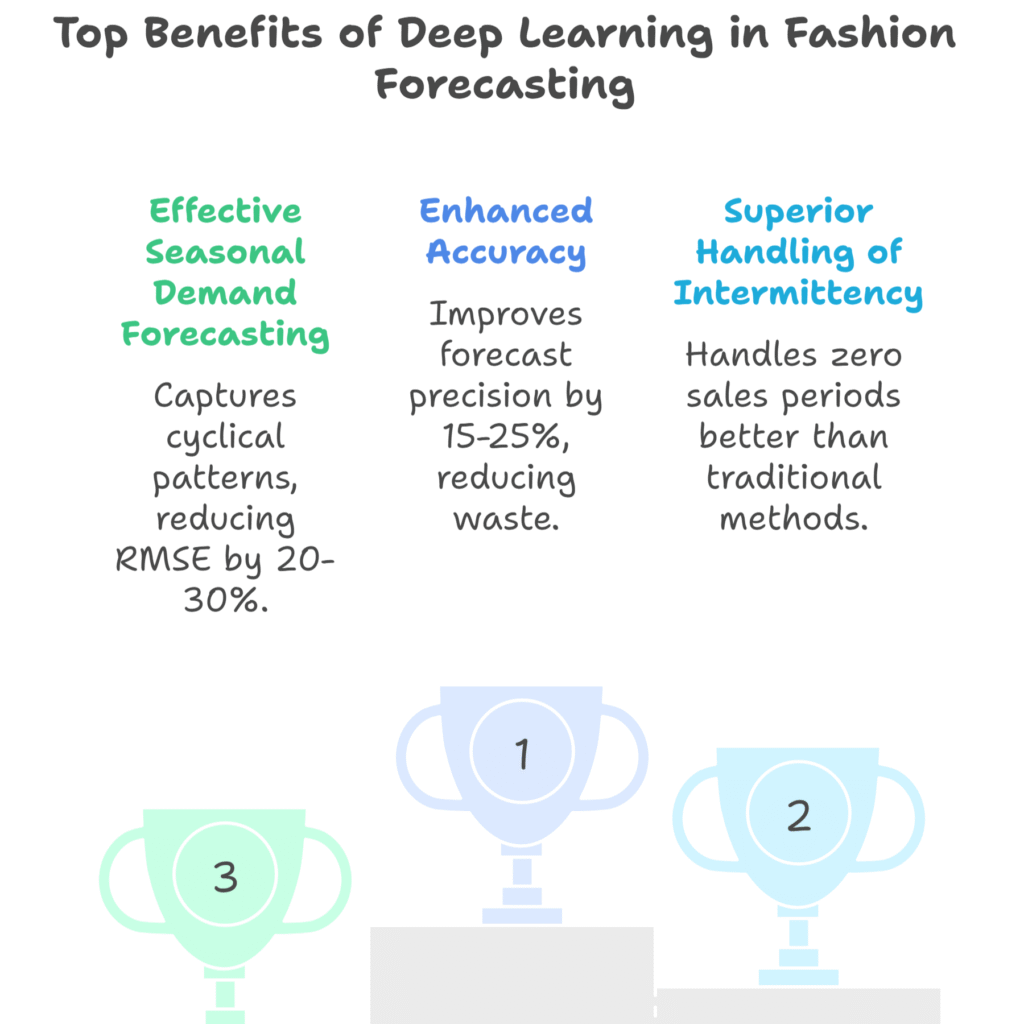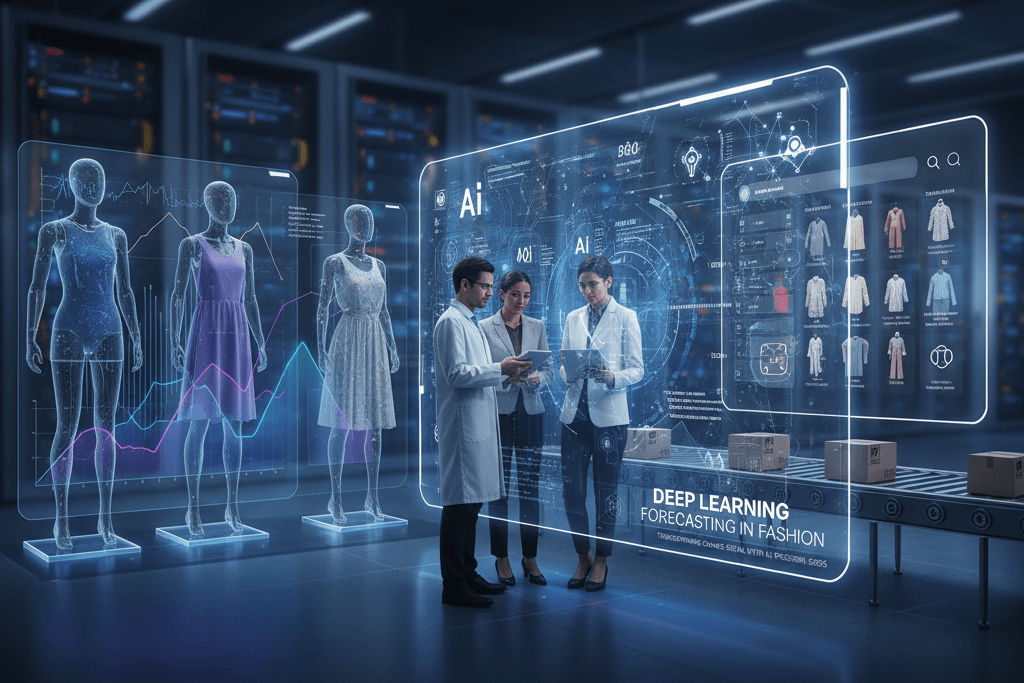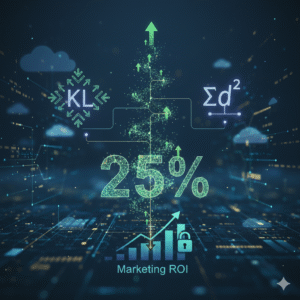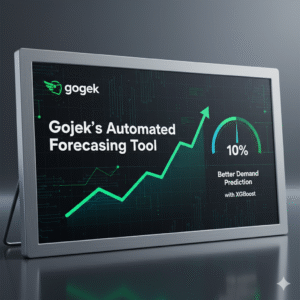Table Of Contents
- Introduction: Navigating the Fast-Paced World of Fashion Retail
- What Is Demand Forecasting in the Fashion Industry?
- The Power of AI in Fashion Industry Forecasting
- Challenges in Demand Prediction for Online Fashion Retailers
- How Deep Learning Improves Sales Forecasting for Fashion E-Commerce
- Case Study: Zalando's Deep Learning Approach to Fashion Forecasting
- Benefits of Deep Learning in Fashion Trend Forecasting
- Optimizing Inventory and Pricing with AI
- Current Trends in Data-Driven Fashion Sales Prediction
- FAQs
- Conclusion: Turning LLM Challenges into Opportunities
Introduction:
Navigating the Fast-Paced World of Fashion Retail
Imagine running an online fashion store where trends shift overnight, customer preferences evolve with social media buzz, and unsold inventory piles up as seasons change. It’s a high-stakes game where guessing demand wrong can mean lost revenue or massive markdowns. This is the reality for many in the fashion industry, but what if you could predict sales with uncanny accuracy? Enter deep learning demand forecasting in fashion—a powerful approach that’s reshaping how retailers plan and profit.
In this blog, we’ll dive into how deep learning is revolutionizing demand forecasting for online fashion. Drawing from real-world applications, like a groundbreaking case study at Zalando, we’ll explore the tech, challenges, and strategies that make it work. Whether you’re a brand manager, e-commerce strategist, or just curious about AI’s role in retail, you’ll find practical insights to apply right away. Let’s unpack this step by step.
What Is Demand Forecasting in the Fashion Industry?
Demand forecasting is essentially predicting how much of a product customers will buy over a specific period. In fashion, it’s trickier than in other sectors because of rapid style changes, seasonal swings, and the sheer volume of items—think millions of SKUs across colors, sizes, and styles. Traditional methods, like simple averages or expert guesses, often fall short here, leading to overstocking or stockouts.
Deep learning fashion forecasting steps in by using advanced algorithms to analyze vast datasets. These models learn patterns from historical sales, pricing history, and external factors like weather or holidays. For instance, data-driven fashion sales prediction can spot that a red dress sells better in summer across certain regions, helping retailers adjust orders proactively.
According to industry reports, accurate forecasting can reduce inventory costs by up to 20-30%, freeing capital for innovation. In online fashion, where returns hover around 30%, getting this right means fewer headaches and happier customers.
The Power of AI in Fashion Industry Forecasting
AI in fashion industry forecasting isn’t just hype—it’s a necessity. Machine learning apparel demand prediction tools sift through terabytes of data to forecast demand at a granular level. Neural networks in the fashion industry, particularly deep learning variants, excel at handling nonlinearity, like how a viral TikTok can spike sales unpredictably.
Consider this: traditional statistical models assume steady patterns, but fashion is anything but steady. Deep learning models, built on layers of artificial neurons, capture complex interactions. They process inputs like past sales, promotions, and even image data from product photos to predict trends.
A key advantage is scalability. For large catalogs, these models train on global data, learning from similar items to forecast new ones—a boon for the high turnover in fashion, where 50-70% of inventory might refresh each season.
Challenges in Demand Prediction for Online Fashion Retailers
Demand forecasting online fashion comes with hurdles that can trip up even seasoned pros. First, the fixed inventory assumption: many brands order stock months ahead without replenishment options, making accurate predictions critical to avoid dead stock.
Then there’s data sparsity. With millions of items, many have short sales histories or none at all (cold starts). Irregularity from sales events or pandemics adds noise, while the price-demand relationship is nonlinear—deeper discounts don’t always mean proportional sales boosts.
What challenges exist in demand prediction for online fashion retailers? High catalog turnover means constant new products, and global markets introduce variables like currency fluctuations. Plus, integrating diverse data sources, from social media sentiment to supply chain delays, demands robust systems.
Overcoming these requires innovative modeling. For example, enforcing monotonicity in models ensures that higher discounts logically lead to higher demand, preventing illogical predictions.
How Deep Learning Improves Sales Forecasting for Fashion E-Commerce
How does deep learning improve sales forecasting for fashion e-commerce? It starts with architecture. Transformer-based models, inspired by natural language processing, handle sequential data like time-series sales brilliantly. They use attention mechanisms to focus on relevant historical patterns, predicting weekly demand over horizons like 26 weeks.
In practice, these models incorporate covariates—variables like discounts or holidays. A specialized decoder might handle short-term (first 5 weeks) and long-term forecasts differently, optimizing for accuracy where it matters most for pricing decisions.researchgate.net
Take inventory optimization in fashion AI: by forecasting demand across multiple discount levels, retailers can simulate scenarios. If a model predicts 100 units sold at full price but 300 at 50% off, you can decide the sweet spot to maximize profit while clearing stock.
Real-world tip: Start with historical sales data as your foundation. Clean it for outliers, then layer in features like product attributes (fabric, color) to boost precision. Tools like PyTorch enable building custom layers for fashion-specific needs, such as piece-wise linear demand responses.
Case Study: Zalando's Deep Learning Approach to Fashion Forecasting
Let’s look at a concrete example from the online fashion giant Zalando. In a detailed case study, researchers deployed a transformer-based deep learning model for demand forecasting since 2019. Handling millions of articles across 14 countries, the model predicts demand for 26 weeks ahead, factoring in 15 discount levels.arxiv.org
The setup: Data from Zalando’s full assortment trains the model, which uses an encoder-decoder structure with 6 attention layers and 23 heads, totaling 53 million parameters. Training on four GPUs takes about 45 hours, costing around $275—a small price for the gains.
Results were impressive. Compared to baselines like LightGBM (a gradient boosting framework) and DeepAR (a probabilistic neural network), the transformer cut demand error by up to 24% and reduced bias significantly. For instance, mean demand error was 0.449 versus LightGBM’s 0.489 and DeepAR’s 0.593.
During sales peaks, it outperformed naive forecasts (last year’s sales adjusted) by nearly 44%, proving its edge in volatile periods. This case highlights how AI demand forecasting solutions for clothing brands can scale, with performance improving as dataset size grows—even with just 6.6% of the assortment, it beat simpler methods.
Key takeaway: The model’s monotonic demand layer ensures realistic price-demand modeling, crucial for optimization. Zalando uses these forecasts in a “forecast-then-optimize” pipeline, directly informing pricing strategies.
Benefits of Deep Learning in Fashion Trend Forecasting
What are the benefits of deep learning in fashion trend forecasting? Beyond accuracy, it drives efficiency. Retailers report 15-25% improvements in forecast precision, leading to better inventory turns and reduced waste—vital in an industry where unsold goods contribute to environmental issues.
Can AI predict fashion trends with high accuracy? Yes, especially when combining sales data with external signals like Google Trends or Instagram analytics. Deep learning vs traditional methods in fashion sales prediction shows the former handling intermittency (zero sales periods) better through global learning.
For seasonal items, is deep learning effective for demand forecasting of seasonal fashion items? Absolutely—models capture cyclical patterns, like holiday spikes, with metrics like RMSE dropping 20-30% in tests.aws.amazon.com
Tips for implementation: Use clustering for apparel sales patterns with deep learning to group similar items, enhancing predictions for new arrivals. Role of historical sales data in AI fashion forecasting is pivotal; aim for at least 2-3 seasons’ worth for robust training.

Optimizing Inventory and Pricing with AI
How can AI optimize inventory for online apparel stores? By integrating predictive analytics, stores minimize holding costs. Machine learning software for inventory management in online fashion stores forecasts at SKU level, flagging slow-movers for early discounts.
Price-demand relationship modeling in fashion is key. Models simulate how demand curves respond to pricing, often as piece-wise linear functions to reflect real behaviors—small discounts might not move the needle, but deeper ones trigger bulk buys.
Are there risks in using AI for inventory forecasting in fashion? Over-reliance on flawed data can amplify biases, like underpredicting niche trends. Mitigate by regular model retraining and human oversight.
Example: An online store using these tools might cut overstock by 40%, as seen in similar retail case studies, by dynamically adjusting orders based on real-time forecasts.
Current Trends in Data-Driven Fashion Sales Prediction
The fashion world is buzzing with AI adoption. Best AI models for fashion product demand forecasting include transformers and LSTMs, with hybrids gaining traction for multi-modal data (text, images, numbers).
Implementing deep learning in eCommerce fashion analytics is on the rise, with platforms like predictive analytics for online fashion retail offering plug-and-play solutions. Trends show a shift toward causal AI, ensuring models understand interventions like price changes.
Future-wise, should fashion brands use machine learning for trend analysis? Definitely—it’s becoming standard, with 60% of top retailers investing by 2025. Watch for integrations with sustainability, forecasting eco-friendly lines’ demand.
- Best AI models for fashion product demand forecasting: Transformers lead, outperforming RNNs in scalability.
- Deep learning vs traditional methods in fashion sales prediction: DL handles nonlinearity better, reducing errors by 25%.
- Role of historical sales data in AI fashion forecasting: It’s the backbone, enabling pattern recognition across seasons.
- Using clustering for apparel sales patterns with deep learning: Groups items for transfer learning, aiding cold starts.
What are the benefits of deep learning in fashion trend forecasting?
It enhances accuracy by 20-40%, reduces waste, and enables personalized stocking, drawing from vast datasets for nuanced predictions.
What challenges exist in demand prediction for online fashion retailers?
Data sparsity, cold starts, and pricing complexities top the list, often addressed via global models.
What data is required for accurate demand forecasting in the fashion industry?
Historical sales, pricing logs, product metadata, and externalities like events or weather.
How does deep learning improve sales forecasting for fashion e-commerce?
Through sequence modeling and attention, it captures long-range dependencies better than stats alone.
How do price and demand interact in online fashion prediction models?
Via enforced monotonic functions, ensuring logical responses to discounts.
Can AI predict fashion trends with high accuracy?
Yes, with error rates under 0.5 in advanced setups like Zalando’s.
Should fashion brands use machine learning for trend analysis?
Absolutely, for competitive edge in volatile markets.
Are there risks in using AI for inventory forecasting in fashion?
Yes, like data biases, but hybrid human-AI approaches minimize them.
FAQs
Conclusion: Embracing AI for a Fashion-Forward Future
Deep learning demand forecasting in fashion isn’t a distant dream—it’s here, powering smarter decisions at places like Zalando. By tackling challenges head-on with innovative models, retailers can forecast with precision, optimize inventory, and model price-demand dynamics effectively. Whether you’re dipping your toes in or scaling up, start with solid data and build from there. The result? A more agile, profitable business in the ever-changing fashion landscape. What’s your next move—experiment with a model today? Visit CareerSwami For More.
























